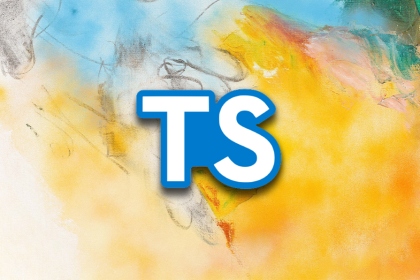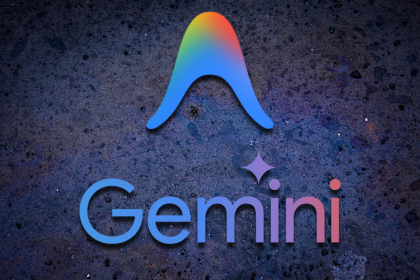
In-browser database sandboxes help frontend developers manage data directly in their web browsers. This ability allows for dynamic user interfaces, offline applications, and quick testing without needing complex backend systems. These lightweight tools, which use APIs like IndexedDB, make it easier to store, search, and sync data. Some sandboxes also offer AI features, like natural language queries and automated data generation, making database tasks simpler for developers who may not have much experience.

This article discusses how in-browser database sandboxes improve frontend workflows. It highlights key tools such as RxDB, database.build, Neo4j Sandbox, and AskYourDatabase, and looks at their features, use cases, and AI capabilities to help you choose the best tool for your project.
The Replay is a weekly newsletter for dev and engineering leaders.
Delivered once a week, it's your curated guide to the most important conversations around frontend dev, emerging AI tools, and the state of modern software.
In-browser database sandboxes are simple tools that let developers store, manage, and access data directly in the browser. They use APIs like IndexedDB or libraries built on them.
These sandboxes act as complete databases, so developers don’t need to set up a backend right away. They allow developers to create, change, and look up data in real time, all while working in the user’s browser.
Key features of these sandboxes include:
Different tools offer a variety of AI features, but the main advantage of these sandboxes is that they can handle data on the user’s device.
Here’s how in-browser databases support key frontend tasks:
Modern web applications need user interfaces (UIs) that update automatically as data changes. In-browser databases provide this functionality through reactive data binding.
When data in the database changes, the UI updates right away. This means developers don’t have to manually change the interface or manage complex states. For example, in a task management app, when a new task is added to an RxDB collection, the UI updates instantly without needing to communicate with the server.
When creating prototypes, developers need realistic data to mimic user interactions. Setting up a server for this can take a long time. In-browser databases allow developers to quickly create mock datasets and run queries directly in the browser. They even help generate sample data or suggest queries, making the prototyping process faster.
Progressive web apps (PWAs) need to work offline to provide a seamless experience. In-browser databases store data locally, so applications remain usable even without an internet connection. This helps sync local changes with a backend once the connection is restored, making them perfect for PWAs.
For example, a note-taking PWA built with an in-browser database allows users to create and edit notes without being online. When the user gets back online, the app syncs changes with a remote server automatically.
AI tools in web-based databases make data management easier for frontend developers who may not have much database knowledge. AI-driven features let developers ask questions in natural language (e.g., “Show products priced below $50”), create data structures, and improve queries without needing to write complicated code.
This helps developers learn faster, speeds up their work, and allows them to focus on building user-friendly interfaces instead of struggling with database commands. AI can also help with data visualization by automatically creating charts or graphs from query results.
Frontend developers can use various in-browser database sandboxes, each with its own strengths and AI features. Here are some strong options:
RxDB (Reactive Database) is a NoSQL database that works on the client side and is designed for real-time web applications. It operates entirely in the browser or Node.js, and uses storage options such as IndexedDB, WebSQL, or local storage to keep data locally.
RxDB is a great choice for single-page applications (SPAs) and PWAs. It offers features like reactive data binding, offline capabilities, AI support through external plugins, and smooth syncing with backend databases. It is schema-based, and its reactive design means that any changes in the database automatically update the user interface, making it easier for frontend developers to manage the state of their applications.
Some of RxDB’s strengths include:
database.build is an in-browser SQL-based database tool that helps you create and manage databases quickly. It uses IndexedDB for local storage, allowing frontend developers to make, search, and edit mock data without needing a backend server.
database.build is designed for building and testing data-driven websites, especially for dynamic UIs and PWAs. One of its key features is AI support, which helps simplify creating queries and generating datasets, making it easier for developers who may not have much database experience.
Additional features include an in-browser SQL environment, mock data generation, rapid prototyping, and a user-friendly interface. Other strengths include:
Neo4j Sandbox is a cloud-based platform where you can try out Neo4j, a top graph database. Unlike some fully in-browser databases like RxDB or database.build, Neo4j Sandbox operates on Neo4j’s cloud infrastructure but allows you to manage and query graph data through your browser.
Neo4j Sandbox is designed for developers creating apps with complex relationships, such as social networks, recommendation systems, or knowledge graphs, and data visualization UIs.
Neo4j Sandbox includes tools like Neo4j Bloom for exploring graphs and generating queries with AI help. It makes working with graph databases easier without needing a local setup. Its strengths include:
AskYourDatabase is a tool that uses AI to help users work with SQL and NoSQL databases using natural language queries. With this tool, you won’t need to write complicated SQL code or use APIs. It can be used as a desktop application or chatbot plugin, like ChatGPT. This lets developers query, visualize, and manage data straight from their browser or local setup.
AskYourDatabase is designed to be easy to use and supports tasks like data analysis, schema design, and mock data insertion. This makes it great for building data-driven UI components, prototyping, and getting quick insights without needing deep database knowledge. While it mainly connects to external databases, AskYourDatabase can also work with in-browser storage like IndexedDB for local prototyping.
Some of this tool’s strengths include:
As we mentioned in earlier sections, many in-browser database sandboxes offer AI functionality to simplify tasks for frontend developers. Neo4j Sandbox uses AI tools like Neo4j Bloom to recommend Cypher queries and visualize graph data, database.build’s AI functions help create mock databases and suggest queries, and AskYourDatabase allows developers to ask questions in natural language to get the data they need.
But not all tools use AI in the same way. For example, RxDB emphasizes reactive architecture and working offline, with AI support mostly for external connections.
To help developers choose the right tool, the table below compares the main features of the tools we explored above:
| Tool | Database type | Frontend benefits | AI features | In-browser vs. Cloud | Accessibility | Ease of use |
|---|---|---|---|---|---|---|
| RxDB | NoSQL (IndexedDB) | Reactive UIs, offline PWAs, sync capabilities | Limited (external AI integration) | In-browser | Open source, free | Moderate (NoSQL knowledge) |
| database.build | SQL | Rapid prototyping, mock data, simple queries | AI query suggestions, data generation | In-browser | Free tier, easy setup | High (visual, AI-driven) |
| Neo4j Sandbox | Graph | Data visualization, complex relationships | AI-powered Cypher query suggestions | Cloud-based | Free sandbox, signup needed | Moderate (Cypher learning) |
| AskYourDatabase | Multi-type | Natural language queries, data-driven components | Natural language to query conversion | In-browser/Cloud | Paid, beginner-friendly | High (NLP-based) |
RxDB and database.build are great for offline storage and syncing. They work well for apps, like note-taking or task management apps, that need to operate without an internet connection.
database.build is good for quick prototyping. It lets you create mock datasets and test UI components without a backend. It’s ideal for dashboards or data-heavy interfaces.
Neo4j Sandbox is best for projects that need graph-based data modeling, such as social networks or recommendation systems, where visualizing connections is important.
AI tools like database.build and AskYourDatabase help developers who may not know much about databases. For example, AskYourDatabase allows you to ask questions in plain language to get data without learning SQL. Likewise, database.build offers AI suggestions to make prototyping easier for beginners.
Neo4j Sandbox provides tools that use AI to help you see data more clearly and suggest queries. Tools like Bloom and its graph data science library work well for creating graph-based user interfaces.
Open source tools like RxDB are free and customizable, but may need more setup work. database.build has a free tier and is easy to use, making it suitable for beginners. Neo4j Sandbox requires a signup, and AskYourDatabase has costs, so check its pricing for long-term use.
In-browser database sandboxes are changing how frontend development works by letting developers manage data directly in the browser, reducing the need to rely on backend systems.
Tools like RxDB, database.build, Neo4j Sandbox, and AskYourDatabase make it easier for developers to streamline their workflows and speed up development. They help build offline PWAs, create prototypes, and visualize complex data relationships. AI features in these tools simplify database management and make it accessible for developers of all skill levels.
If you are creating a reactive single-page application, simulating data for a prototype, or displaying a graph-based user interface, in-browser database sandboxes can greatly enhance your frontend projects. Select the right tool for your needs, use AI to simplify tasks, and optimize your client-side data management using what you learned in this article today!

This tutorial walks through recreating Apple’s Liquid Glass UI on the web using SVG filters, CSS, and React. You’ll learn how to build refraction and reflection effects with custom displacement and specular maps, and how to balance performance and accessibility when using advanced filter pipelines.

tRPC solved type safety for full-stack TypeScript teams. oRPC borrowed the best parts and added interoperability. This article breaks down how both frameworks work and where each one fits best.

Check out Google’s latest AI releases, Gemini and the Antigravity AI IDE. Understand what’s new, how they work, and how they can reshape your development workflow.

Learn about Bun 1.3, which marks a shift from fast runtime to full JS toolchain—and see the impact of Anthropic’s acquisition of Bun.
Hey there, want to help make our blog better?
Join LogRocket’s Content Advisory Board. You’ll help inform the type of content we create and get access to exclusive meetups, social accreditation, and swag.
Sign up now